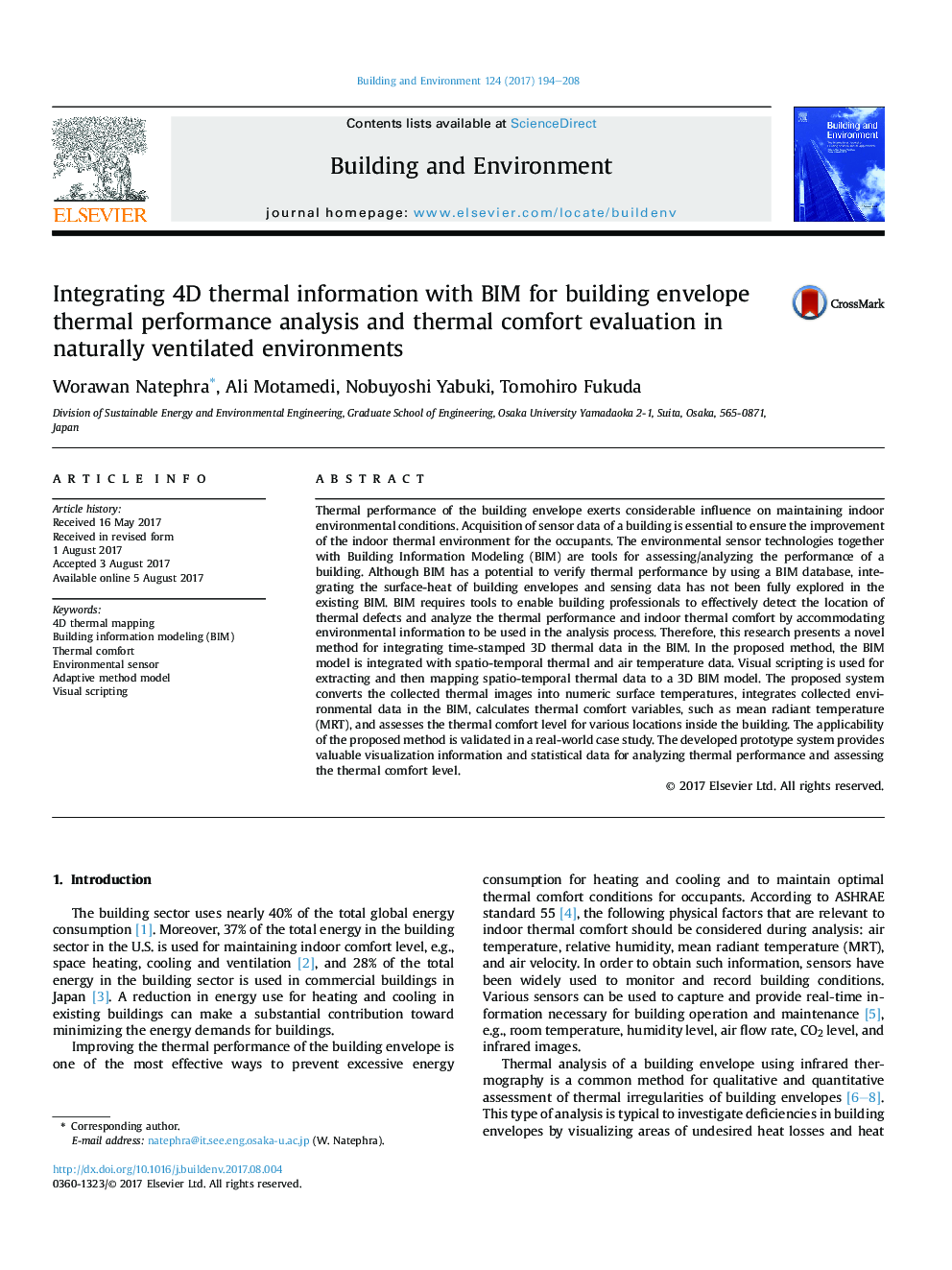| Article ID | Journal | Published Year | Pages | File Type |
|---|---|---|---|---|
| 4911416 | Building and Environment | 2017 | 15 Pages |
Abstract
Thermal performance of the building envelope exerts considerable influence on maintaining indoor environmental conditions. Acquisition of sensor data of a building is essential to ensure the improvement of the indoor thermal environment for the occupants. The environmental sensor technologies together with Building Information Modeling (BIM) are tools for assessing/analyzing the performance of a building. Although BIM has a potential to verify thermal performance by using a BIM database, integrating the surface-heat of building envelopes and sensing data has not been fully explored in the existing BIM. BIM requires tools to enable building professionals to effectively detect the location of thermal defects and analyze the thermal performance and indoor thermal comfort by accommodating environmental information to be used in the analysis process. Therefore, this research presents a novel method for integrating time-stamped 3D thermal data in the BIM. In the proposed method, the BIM model is integrated with spatio-temporal thermal and air temperature data. Visual scripting is used for extracting and then mapping spatio-temporal thermal data to a 3D BIM model. The proposed system converts the collected thermal images into numeric surface temperatures, integrates collected environmental data in the BIM, calculates thermal comfort variables, such as mean radiant temperature (MRT), and assesses the thermal comfort level for various locations inside the building. The applicability of the proposed method is validated in a real-world case study. The developed prototype system provides valuable visualization information and statistical data for analyzing thermal performance and assessing the thermal comfort level.
Related Topics
Physical Sciences and Engineering
Energy
Renewable Energy, Sustainability and the Environment
Authors
Worawan Natephra, Ali Motamedi, Nobuyoshi Yabuki, Tomohiro Fukuda,
